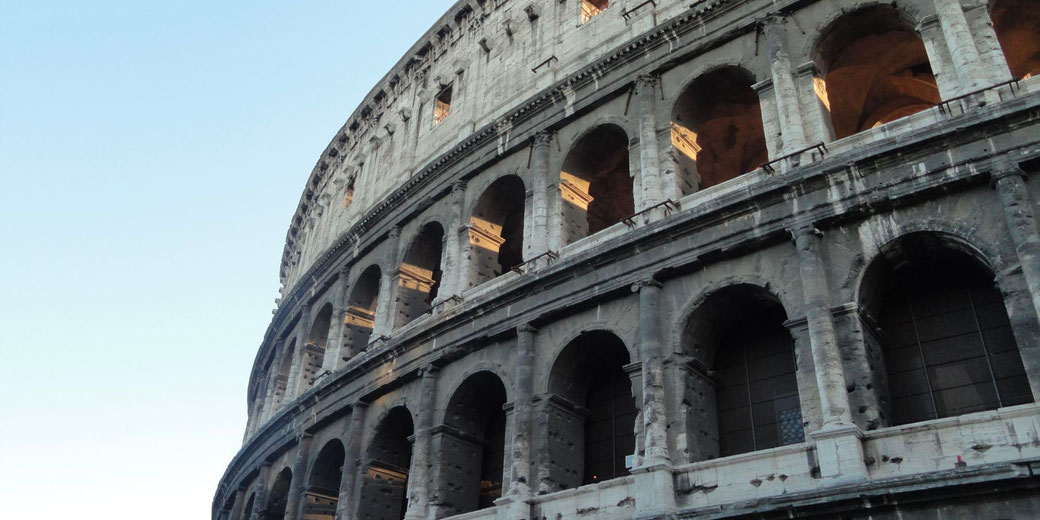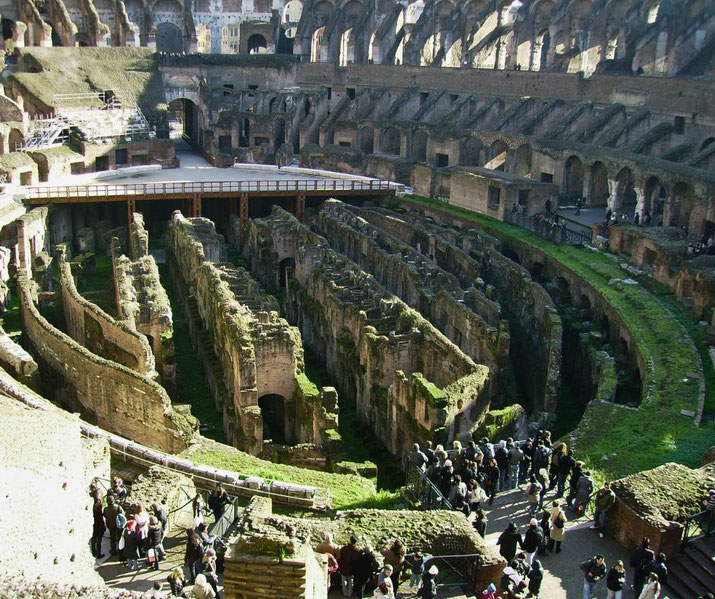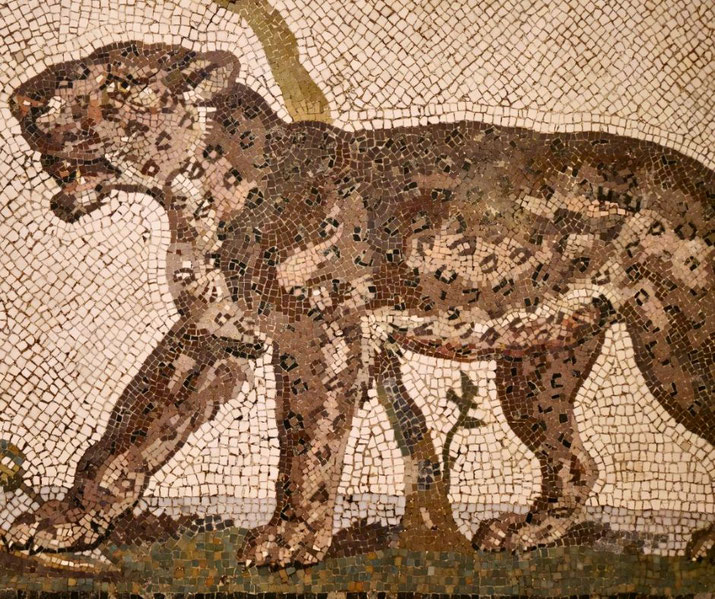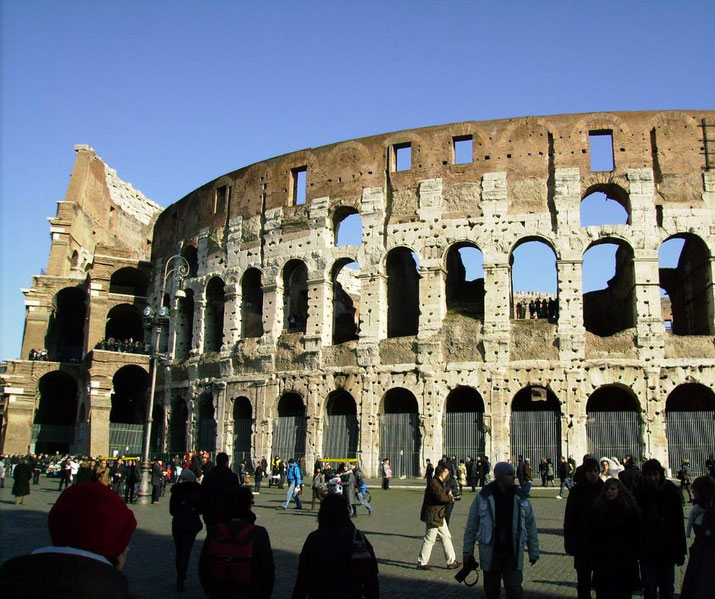The Colosseum: Rome's grand arena of life and death

Step into the Colosseum, and you're not just walking into an ancient amphitheater; you're stepping onto a stage where history, culture, and human drama have played out for nearly two millennia.
This colossal structure, once the epicenter of Roman entertainment, has witnessed everything from gladiatorial combat to naval battles, from the rise of emperors to the fall of an empire.
But what led to the construction of this architectural marvel?
How did the games and events held here reflect the social and political fabric of ancient Rome?
And why did it fall into disuse?
Ancient Rome before the Colosseum
The late 1st century AD was a period of transition and consolidation for the Roman Empire.
Following the tumultuous Year of the Four Emperors in AD 69, Vespasian emerged as the ruler, founding the Flavian Dynasty.
His reign marked a departure from the excesses and autocratic tendencies of his predecessor, Nero, and aimed to restore stability and traditional Roman values.
The construction of the Colosseum, therefore, was not just an architectural endeavor but a political act, signaling a return to the Roman ideals of civic virtue and communal entertainment.
The Colosseum was erected during a time when Rome was the epicenter of a vast empire stretching from Britain in the west to Judea in the east.
The city itself was a bustling metropolis, a melting pot of cultures, languages, and social classes.
Amidst this diversity, the Colosseum served as a unifying force, a public space where citizens from all walks of life could come together to witness spectacles that demonstrated Rome's military prowess, cultural superiority, and the benevolence of its rulers.
Who built the Colosseum, and why?
The Flavian Dynasty, founded by Vespasian and continued by his sons Titus and Domitian, played a pivotal role in the construction and early history of the Colosseum.
Vespasian sought to restore stability to Rome and legitimize his rule.
The Colosseum, originally known as the Flavian Amphitheatre, was conceived as a monumental project that would not only provide entertainment to the Roman populace but also serve as a symbol of the dynasty's commitment to public welfare and traditional Roman values.
It was a calculated move to distance the Flavians from the excesses of the Julio-Claudian Dynasty, particularly the unpopular Nero, whose lavish Golden House (Domus Aurea) and its artificial lake had occupied the site where the Colosseum would be built.
Vespasian initiated the construction of the Colosseum in AD 72, but it was his son Titus who saw the project to completion.
The construction of the Colosseum was largely funded through spoils taken from the Jewish War, following the sack of Jerusalem in AD 70. Jewish prisoners of war provided the bulk of the labor to build the monumental structure.
The Colosseum was completed in AD 80 and the inaugural games lasted for a staggering 100 days, featuring a variety of events including gladiatorial combats, animal hunts, and naval battles.
These games were not just spectacles but political statements, reinforcing the Flavian message of Roman might and imperial benevolence.
Titus, like his father, understood the power of public spectacle as a tool for political propaganda.
The Colosseum became a stage where the Flavian emperors could demonstrate their prowess, not just as military leaders but as patrons of Roman culture and tradition.
Domitian, the younger son of Vespasian, also contributed to the Colosseum's history, albeit in a less grandiose manner than his predecessors.
He made several modifications to the structure, including the addition of a hypogeum—a complex system of underground tunnels, elevators and chambers that allowed for more elaborate staging of events.
Domitian's reign was marked by a degree of authoritarianism and was less popular than those of Vespasian and Titus, but his contributions to the Colosseum served to further ingrain the amphitheater in the social and cultural fabric of Rome.
It continued to be a venue for games and other public spectacles, each event serving as a reaffirmation of the values and ideals that the Flavian Dynasty had championed.
Its incredible design and architecture
Built primarily of travertine limestone, tuff, and concrete, the Colosseum was an elliptical structure that stood approximately 157 feet high (48 metres), 620 feet long (189 metres), and 513 feet wide (156 metres).
Its sheer size was awe-inspiring, designed to accommodate up to 50,000 spectators, although some scholars believe this number could be as high as 80,000.
But it wasn't just the scale that impressed; it was the ingenuity of its design. The amphitheater featured a complex system of vaults and arches, a testament to the advanced engineering skills of Roman architects.
These arches not only provided structural integrity but also allowed for better distribution of the crowd, facilitating smooth entry and exit through the 80 arched entrances.
The interior of the Colosseum was equally remarkable. The arena floor was made of wooden planks covered with sand to absorb blood, a grim but practical feature.
Surrounding the arena were tiered seating areas, or cavea, divided into different sections to accommodate various social classes.
The senators and VIPs sat closest to the action, while the general populace occupied the higher tiers.
Women and lowest classes of society were usually relegated to the very top. This meticulous arrangement of seating was a physical manifestation of Rome's social hierarchy.
One of the most ingenious features of the Colosseum was its hypogeum, an underground complex beneath the arena floor.
Added by Emperor Domitian, the hypogeum consisted of tunnels and chambers that housed gladiators, animals, and stage props.
Complex pulley systems and trap doors allowed for dramatic, sudden appearances of beasts and combatants into the arena, adding an element of surprise and theatricality to the games.
Moreover, the Colosseum was equipped with a velarium, a retractable awning that could be unfurled to provide shade for spectators, showcasing the Romans' attention to detail and their consideration for the comfort of the audience.

The gory games and spectacular events it hosted
The Colosseum was the ultimate stage for a variety of games and events that captivated the Roman populace.
The most famous of these were the gladiatorial combats, contests where men, and occasionally women, fought to the death or until a clear victor emerged.
These gladiators were often slaves, prisoners of war, or volunteers seeking glory and a chance at fame.
The combats were meticulously choreographed, with different types of gladiators wielding specialized weapons and armor, adding a layer of strategy and skill to the brutal encounters.
But the Colosseum's games were not just about bloodsport; they were theatrical productions, complete with elaborate sets, costumes, and even storylines that often reenacted famous battles or mythological tales.
The spectacle of gladiatorial combat was a complex blend of sport, theater, and ritual, serving as both entertainment and a vivid display of Roman martial values.
Beyond gladiatorial contests, the Colosseum hosted a range of other spectacles, each designed to awe the audience and demonstrate the might of Rome.
Animal hunts, known as venationes, were popular events where exotic beasts like lions, elephants, and bears were pitted against human hunters.
These events showcased Rome's reach, as the animals were often imported from the far corners of the empire and emphasized the Roman ideal of man's dominion over nature.
Equally impressive were the mock naval battles, or naumachiae, where the Colosseum was flooded with water and flat-bottomed ships engaged in combat.
These events were engineering marvels, requiring intricate planning and resources, and serving as a celebration to Rome's naval achievements.

The Colosseum was also a venue for public executions, usually held during the midday break in games.
These were not mere acts of capital punishment but often involving mythological or historical narratives where the condemned played a part.
For instance, a prisoner might be dressed as the mythological figure Prometheus and 'eaten' by an eagle.
These executions served a dual purpose: they were both a form of public entertainment and a stark reminder of the consequences of defying Roman law and authority.
Why did people stop using the Colosseum?
As Rome faced increasing economic difficulties, political instability, and external threats, the grand spectacles that once filled the Colosseum began to wane in frequency and splendor.
By the 5th century AD, with the Western Roman Empire in decline, the Colosseum's role as a venue for state-sponsored entertainment diminished.
The cessation of the games was not just a result of Rome's dwindling resources; it was also influenced by the rise of Christianity, which frowned upon the bloodsport and paganism often showcased in the arena.
The last recorded games were held in AD 404, after which Emperor Honorius banned them, however animal hunts continued until the early 6th century.
The end of the games did not mean the end of the Colosseum's utility.
Over the subsequent centuries, this architectural marvel took on various roles that were reflective of the changing times.
During the medieval period, the Colosseum was repurposed into housing complexes, workshops, and even a fortress by Roman barons.
Its stones were plundered for building materials, and its once-grand interior was partitioned into smaller, utilitarian spaces.
Earthquakes in AD 847 and AD 1349 caused significant structural damage to it, with major collapses leading to the loss of large sections of its outer walls.
In the Renaissance and Baroque periods, the Colosseum underwent a different kind of transformation.
Recognized for its historical and architectural significance, it became a subject of scholarly interest and artistic inspiration.
However, it was also during this time that the Colosseum suffered from neglect and further plundering, as popes and rulers took its stones to build palaces and churches, including St Peter's Basilica.
It wasn't until the 18th and 19th centuries that efforts were made to preserve the structure, driven by a newfound appreciation for ancient Roman culture and an understanding of the Colosseum's historical importance.

What do you need help with?
Download ready-to-use digital learning resources
Copyright © History Skills 2014-2025.
Contact via email
With the exception of links to external sites, some historical sources and extracts from specific publications, all content on this website is copyrighted by History Skills. This content may not be copied, republished or redistributed without written permission from the website creator. Please use the Contact page to obtain relevant permission.





